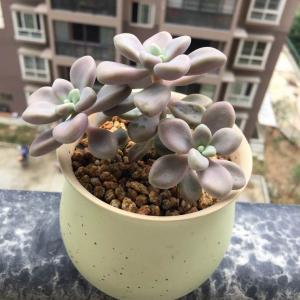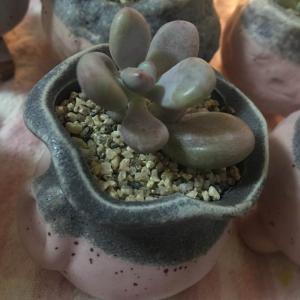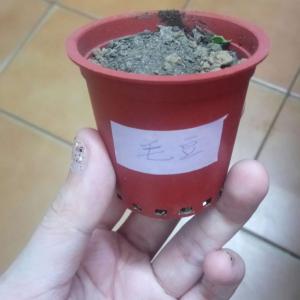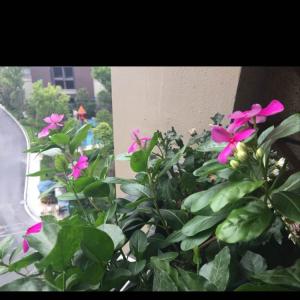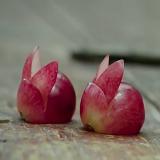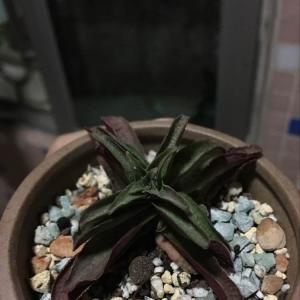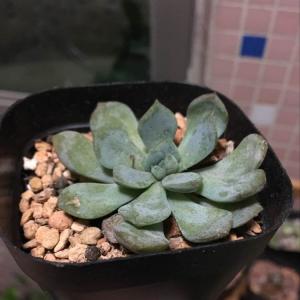文章
Miss Chen
2017年08月11日

Native to tropical Asia, the bamboo orchid (Arundina graminifolia or Arundina barbusifolia) grows to 8 feet with reedy stems and evergreen, grass-like leaves up to 1-foot long. Its 2- to 3-inch-wide flowers appear in clusters at the stems' tips in summer and autumn, each lasting for about three days. Those fragrant blooms vary in color from white to pinkish mauve with a darker purple lip. The Missouri Botanical Garden lists the bamboo orchid as perennial only in U.S. Department of Agriculture plant hardiness zones 11 through 12, but other sources consider it hardy as far north as USDA zone 9.

Indoor Position
Due to its large size and preference for high humidity, this orchid generally performs better outdoors than indoors. If you wish to try it as a houseplant, a clump – which usually contains three to five canes – needs a pot at least 12 inches in diameter. The bamboo orchid isn't picky about its medium and can be grown in regular potting soil, sphagnum moss or a more typical orchid mix of 1 part organic potting soil, 1 part coarse orchid bark and 1 part sand.
The bamboo orchid prefers full sun or at least partial sun, so position it on or near a south-facing windowsill where it receives temperatures between 60 and 80 degrees Fahrenheit.
Keep the air moist around it by placing it in a humid room, such as a bathroom, or setting it atop a humidity tray.
The plant is seldom bothered by pests or diseases.
Indoor Provisions
Water the orchid frequently enough that its medium or mix never dries out completely.
Fertilize it once a week from spring to fall with a 20-20-20 plant food, mixing 1/4 teaspoon of the crystals into 1 gallon of water. Always follow label instructions.
If possible, move the plant outdoors during the summer, setting it in shade at first, and gradually accustoming it to full sun.
Outdoor Position
If you wish to grow the bamboo orchid outdoors, place it in a protected, raised bed in full or partial sun. That bed should be filled with a humus-rich soil, which is about 2 parts compost, 1 part topsoil and 1 part coarse sand. Space the plants 1 foot apart in that bed and mulch it with 3 inches of shredded bark -- to keep the soil moist -- but don't allow the mulch to touch the plant's stems.

Outdoor Provisions
Water the bed about once every three days when there is no rain, or however often is necessary to prevent the soil from drying out.
Feed the orchids once every two months during spring and summer by pulling back the mulch and sprinkling the pellets of an organic fertilizer, such as 5-5-5 around the bases of the plants, using 1 cup for each 20 square feet of bed.
When all the buds on a cane have bloomed, snip that cane off near soil level with sterilized pruning tools.

Indoor Position
Due to its large size and preference for high humidity, this orchid generally performs better outdoors than indoors. If you wish to try it as a houseplant, a clump – which usually contains three to five canes – needs a pot at least 12 inches in diameter. The bamboo orchid isn't picky about its medium and can be grown in regular potting soil, sphagnum moss or a more typical orchid mix of 1 part organic potting soil, 1 part coarse orchid bark and 1 part sand.
The bamboo orchid prefers full sun or at least partial sun, so position it on or near a south-facing windowsill where it receives temperatures between 60 and 80 degrees Fahrenheit.
Keep the air moist around it by placing it in a humid room, such as a bathroom, or setting it atop a humidity tray.
The plant is seldom bothered by pests or diseases.
Indoor Provisions
Water the orchid frequently enough that its medium or mix never dries out completely.
Fertilize it once a week from spring to fall with a 20-20-20 plant food, mixing 1/4 teaspoon of the crystals into 1 gallon of water. Always follow label instructions.
If possible, move the plant outdoors during the summer, setting it in shade at first, and gradually accustoming it to full sun.
Outdoor Position
If you wish to grow the bamboo orchid outdoors, place it in a protected, raised bed in full or partial sun. That bed should be filled with a humus-rich soil, which is about 2 parts compost, 1 part topsoil and 1 part coarse sand. Space the plants 1 foot apart in that bed and mulch it with 3 inches of shredded bark -- to keep the soil moist -- but don't allow the mulch to touch the plant's stems.

Outdoor Provisions
Water the bed about once every three days when there is no rain, or however often is necessary to prevent the soil from drying out.
Feed the orchids once every two months during spring and summer by pulling back the mulch and sprinkling the pellets of an organic fertilizer, such as 5-5-5 around the bases of the plants, using 1 cup for each 20 square feet of bed.
When all the buds on a cane have bloomed, snip that cane off near soil level with sterilized pruning tools.
0
0
求助
Abby Gill
2017年08月10日

Two of my propogated leaves are starting to shrivel up at the ends. Their roots are about 2-4 millimeters long, and I spray them once daily. Am I watering them too much or too little? Should I start watering them normally once a week, or keep spraying them daily until they grow to a moderate size?
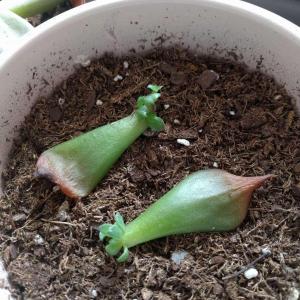
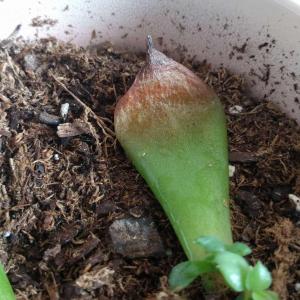


0
0
Aria:It's normal for a leaf to start to die as the roots are growing. I usually spray my leafs daily and sometimes even twice. Only thing I can think of is it's getting too much sun hence the quicker dying ends. I had a leaf shrivel up when I left it too long out in the sun, luckily it's still growing nicely
Ebunny:The main leaf will die off. Not sure about the watering.
文章
Miss Chen
2017年08月10日


Floribunda roses present clusters of two to three blooms on each cane, growing from 2 to 4 feet tall. These lovely specimens are a hybrid created by crossing hybrid tea roses with polyanthas. Bred to be hardy and disease-resistant, they require minimal maintenance. With just a little effort, you can have glorious blooms all season long.
Floribunda Rose Care
Step 1
Prune canes once leaf buds appear in the spring to stimulate plant growth. Cut each cane back by half. Use sharp scissors or clippers.
Step 2
Fertilize floribunda roses each spring once new growth appears. Use a rose-specific fertilizer and follow label directions carefully. Rose fertilizer is available as a liquid concentrate and as pellets. Liquid concentrate is mixed with water and poured at the base of the plant. Pellet form fertilizer is shaken on the soil around the plant. Either application is effective; pellets are applied less often than the liquid concentrate.
Step 3
Work shredded leaves, compost or other organic material into the ground around the rose bush. Do not disturb the plant's roots.

Step 4
Shovel a 1- to 3-inch layer of mulch on top of the soil surrounding the floribunda rose; this helps the plant retain moisture and limits weed growth. Avoid laying mulch up against the base of plant as that could cause stem rot.
Step 5
Water plant once or twice a week, supplementing the natural rainfall. Water deeply and aim for the base of the plant. Roses require 4-5 gallons of water per week during the growing season. Shallow watering may cause the development of weak roots.
Step 6
Prune the rose bush as flowers finish blooming. This will stimulate new growth. Once a flower is done blooming, cut back that cane. Perform the cut with sharp scissors or clippers and aim for a spot directly above a leaf bud. New growth will appear just below the cut.
0
0
文章
Erin
2017年08月10日

#兰花 常用分株、播种及组织培养兰花。常见的以分株繁殖为主,兰花分株兰花春秋两季均可进行,兰花一般每隔2—3年分株一次。
分株后的每丛至少要保存5个连结在一起的假球茎,而这些假球茎上至少有3个叶片生长健壮。分株前要减少灌水,使盆土较干。出盆时,除去根部旧土壤,以清水洗净,晾2—3小时。待根部发白微蔫后,再以利刀在假球茎间切割分株,切口处涂以草木灰或硫磺粉防腐。

栽种兰花适合采用富含腐殖质的砂质壤土。花盆以瓦盆为好,有利植株生长。盆底排水孔应比一般花盆为大,以有3—4个底孔为宜,花盆的大小与深浅依植株大小而定。
上盆时,先以碎瓦片覆在盆底孔上,再铺上粗石子,约占盆深度1/5—1/4,再放粗粒土及少量细土,使盆中部的土隆起后栽植。栽时将根散开,植株应稍倾斜。盆土随填随舒展其根,并摇动花盆数次,同时用手指塞紧压实。
栽植深度以将假球茎刚刚埋人土中为度。栽植后盆面略呈拱形,盆边缘留2厘米沿口,最后用细喷壶喷水2—3次,置阴处10—15天。附生兰需要分株时,先将根修好,适当剪开,然后用泥炭藓、蕨根、残叶等栽培材料包在根系之外,种入漏空花盆中。然后浇水,保持一定湿度。
场地选择:要求四周空旷,通风良好,并靠近水面,空气湿润,无煤烟污染。场地的西南面,可种 蕙兰常绿阔叶树,郁闭度应在0.7左右,这样可减少午后阳光照射,调节湿度与温度。
分株后的每丛至少要保存5个连结在一起的假球茎,而这些假球茎上至少有3个叶片生长健壮。分株前要减少灌水,使盆土较干。出盆时,除去根部旧土壤,以清水洗净,晾2—3小时。待根部发白微蔫后,再以利刀在假球茎间切割分株,切口处涂以草木灰或硫磺粉防腐。

栽种兰花适合采用富含腐殖质的砂质壤土。花盆以瓦盆为好,有利植株生长。盆底排水孔应比一般花盆为大,以有3—4个底孔为宜,花盆的大小与深浅依植株大小而定。
上盆时,先以碎瓦片覆在盆底孔上,再铺上粗石子,约占盆深度1/5—1/4,再放粗粒土及少量细土,使盆中部的土隆起后栽植。栽时将根散开,植株应稍倾斜。盆土随填随舒展其根,并摇动花盆数次,同时用手指塞紧压实。
栽植深度以将假球茎刚刚埋人土中为度。栽植后盆面略呈拱形,盆边缘留2厘米沿口,最后用细喷壶喷水2—3次,置阴处10—15天。附生兰需要分株时,先将根修好,适当剪开,然后用泥炭藓、蕨根、残叶等栽培材料包在根系之外,种入漏空花盆中。然后浇水,保持一定湿度。
场地选择:要求四周空旷,通风良好,并靠近水面,空气湿润,无煤烟污染。场地的西南面,可种 蕙兰常绿阔叶树,郁闭度应在0.7左右,这样可减少午后阳光照射,调节湿度与温度。
3
1
文章
Dummer. ゛☀
2017年08月09日

Marsh-marigold Caltha palustris is one of those wonderful wildflowers of early spring that offer hope of warmer weather to come after a long cold winter.
Identification
Between 2 and 5cm in diameter, most of the bright yellow flowers of Caltha palustris have five petal-like sepals (although sometimes you may see flowers with as few as four petals and very occasionally there can be up to nine) with numerous yellow stamens.
The waxy green kidney-shaped or roundish leaves are 5 to 20cm across and have bluntly-serrated margins. Another very helpful identifying feature is that the stems of Marsh-marigolds are hollow.
Distribution
Common and widespread throughout Britain and Ireland, Marsh-marigolds are found throughout mainland Europe, northern Asia and the cooler northern parts of North America.
Habitat
Found mainly in wet (carr) woodlands, river and stream margins, bogs, marshes, and the banks of lakes and ponds, the aptly named Marsh-marigold, alsoknown by many other local names including Kingcup and May Blobs, is a most conspicuous wildflower. These large butter-yellow flowers also light up the edges of shady woodland streams and damp ditches beside country lanes.
Blooming Times
In sheltered locations the first flowers of Caltha palustris can appear in late February well before the spring fireworks display of other wildflowers, but April and May are when you will see these flowers at their best in Britain. A few stragglers sometimes continue to bloom well into June or early July, but by then the plants have collapsed and lost their youthfulness.
Uses
Roots, stems, leaves, flowers and seeds of this plant are all poisonous, and if handled they have been known to cause irritation of the skin and even dermatitis. Nevertheless, their value in the margins of a garden pond or any other shaded boggy hollow is not restricted to their aesthetic beauty: in common with other members of the Buttercup family, Marsh-marigolds are pollinated by the many small insects of springtime.
Identification
Between 2 and 5cm in diameter, most of the bright yellow flowers of Caltha palustris have five petal-like sepals (although sometimes you may see flowers with as few as four petals and very occasionally there can be up to nine) with numerous yellow stamens.

The waxy green kidney-shaped or roundish leaves are 5 to 20cm across and have bluntly-serrated margins. Another very helpful identifying feature is that the stems of Marsh-marigolds are hollow.

Distribution
Common and widespread throughout Britain and Ireland, Marsh-marigolds are found throughout mainland Europe, northern Asia and the cooler northern parts of North America.
Habitat
Found mainly in wet (carr) woodlands, river and stream margins, bogs, marshes, and the banks of lakes and ponds, the aptly named Marsh-marigold, alsoknown by many other local names including Kingcup and May Blobs, is a most conspicuous wildflower. These large butter-yellow flowers also light up the edges of shady woodland streams and damp ditches beside country lanes.

Blooming Times
In sheltered locations the first flowers of Caltha palustris can appear in late February well before the spring fireworks display of other wildflowers, but April and May are when you will see these flowers at their best in Britain. A few stragglers sometimes continue to bloom well into June or early July, but by then the plants have collapsed and lost their youthfulness.
Uses
Roots, stems, leaves, flowers and seeds of this plant are all poisonous, and if handled they have been known to cause irritation of the skin and even dermatitis. Nevertheless, their value in the margins of a garden pond or any other shaded boggy hollow is not restricted to their aesthetic beauty: in common with other members of the Buttercup family, Marsh-marigolds are pollinated by the many small insects of springtime.
0
0



